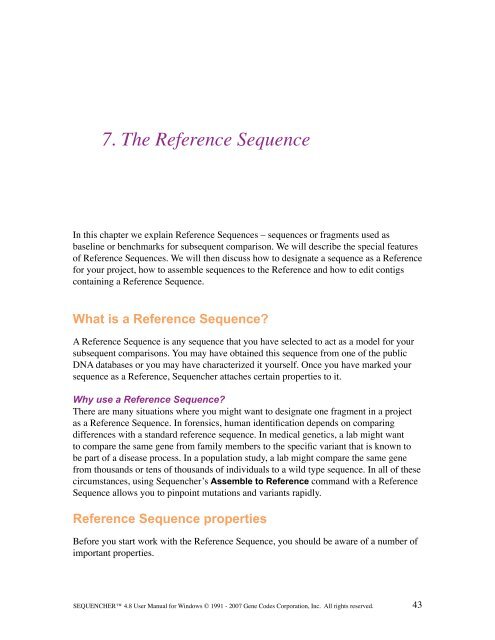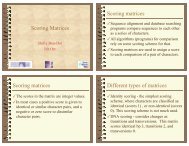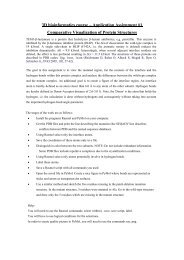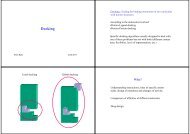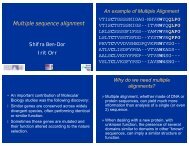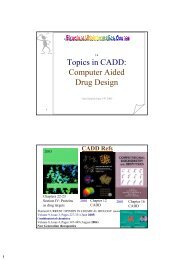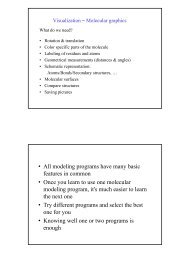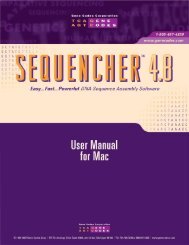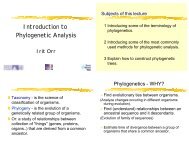Sequencher 4.8 User Manual--PC - Bioinformatics and Biological ...
Sequencher 4.8 User Manual--PC - Bioinformatics and Biological ...
Sequencher 4.8 User Manual--PC - Bioinformatics and Biological ...
Create successful ePaper yourself
Turn your PDF publications into a flip-book with our unique Google optimized e-Paper software.
7. The Reference Sequence<br />
In this chapter we explain Reference Sequences – sequences or fragments used as<br />
baseline or benchmarks for subsequent comparison. We will describe the special features<br />
of Reference Sequences. We will then discuss how to designate a sequence as a Reference<br />
for your project, how to assemble sequences to the Reference <strong>and</strong> how to edit contigs<br />
containing a Reference Sequence.<br />
What is a Reference Sequence<br />
A Reference Sequence is any sequence that you have selected to act as a model for your<br />
subsequent comparisons. You may have obtained this sequence from one of the public<br />
DNA databases or you may have characterized it yourself. Once you have marked your<br />
sequence as a Reference, <strong>Sequencher</strong> attaches certain properties to it.<br />
Why use a Reference Sequence<br />
There are many situations where you might want to designate one fragment in a project<br />
as a Reference Sequence. In forensics, human identification depends on comparing<br />
differences with a st<strong>and</strong>ard reference sequence. In medical genetics, a lab might want<br />
to compare the same gene from family members to the specific variant that is known to<br />
be part of a disease process. In a population study, a lab might compare the same gene<br />
from thous<strong>and</strong>s or tens of thous<strong>and</strong>s of individuals to a wild type sequence. In all of these<br />
circumstances, using <strong>Sequencher</strong>’s Assemble to Reference comm<strong>and</strong> with a Reference<br />
Sequence allows you to pinpoint mutations <strong>and</strong> variants rapidly.<br />
Reference Sequence properties<br />
Before you start work with the Reference Sequence, you should be aware of a number of<br />
important properties.<br />
SEQUENCHER <strong>4.8</strong> <strong>User</strong> <strong>Manual</strong> for Windows © 1991 - 2007 Gene Codes Corporation, Inc. All rights reserved.<br />
43


